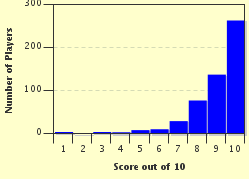Quiz Answer Key and Fun Facts
1. Thousands of years ago our ancestors roamed the world in search of food until they discovered something that allowed them to stay in the same place. What had they discovered?
2. 6,000 years ago a civilization called the Sumerians discovered a very useful purpose for clay tablets. What did they use those tablets for?
3. First our ancestors made tools from stone, then from bronze. later they learnt to work with a material that gave them even better tools. From which material did our ancestors make their tools next?
4. The Romans had big cities that needed a lot of water for the people who lived there. What did they invent to transport water into the cities?
5. About 1200 years ago the Chinese invented something for entertainment. Later they discovered that this invention could also be used for making weapons. What had the Chinese invented?
6. Somewhere around 1440 a German named Gutenberg made a revolutionary development which made it possible to spread ideas much faster than ever before. Which invention made this possible?
7. In 1492, according to long-held belief, Christopher Columbus accidentally discovered a new continent. Which continent was he credited with discovering?
8. Somewhere around 1780 James Watt made a breakthrough which made it possible to make all kinds of machines. What had he improved upon?
9. In 1796 a man named Edward Jenner noticed that milkmaids never contracted smallpox. This gave him an idea which would save millions of lives. What had he discovered?
10. In the 1920s Scotsman John Logie Baird made a major contribution to an invention that gave us the possibility to see news from all over the world in a moment's time. It also gave us the most popular form of entertainment ever. What had he invented?
Source: Author
AlonsoKing
This quiz was reviewed by FunTrivia editor
NatalieW before going online.
Any errors found in FunTrivia content are routinely corrected through our feedback system.


